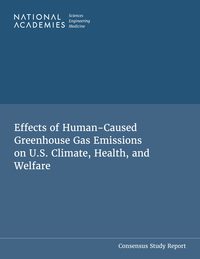Breaking News: Ninth Circuit Upholds California’s Low Carbon Fuel Standard
Does California’s life cycle analysis of the carbon intensity of transportation fuel facially discriminates against out-of-state ethanol?
In a sweeping victory for the California Air Resources Board, the Ninth Circuit today issued an opinion in Rocky Mountain Farmers Union v. Corey upholding the state’s Low Carbon Fuel Standard (LCFS) and reversing a lower court ruling that the LCFS facially discriminated against interstate commerce in violation of the U.S. Constitution. The court also vacated the lower court’s injunction preventing the LCFS from going into effect. The vote was 2-1 with Judges Dorothy Nelson and Ronald Gould in the majority and Mary Murgia concurring in part but dissenting on the main holding. In the interest of full disclosure, I co-wrote an amicus brief supporting the state’s position that the LCFS is constitutionally permissible.
Here’s some factual and legal background. The LCFS caps the average carbon intensity of transportation fuels in California’s market. Fuel blenders must either meet a specified annual carbon intensity in their fuels or use credits to comply with the standard if their intensity is too high. If their fuel is less carbon intensive than required, blenders can generate credits to sell to companies that need them to comply with the standard.
In order to capture the full measure of carbon intensity, the state uses a “life cycle analysis,” taking into account all of the carbon emissions that are generated in not only the production and refining of the fuel but also in transporting it to market. The state does so for obvious reasons: if it took into account only the emissions generated from, for example, production, overall emissions could increase if the emissions from transporting the fuel into the state were higher than fuel produced elsewhere, including within the state. The result is that an identical gallon of gasoline blended to reduce the carbon intensity of the fuel with, say, ethanol, could have a higher carbon intensity depending on where and how the gasoline was produced, refined and shipped. North Dakota ethanol-blended gasoline, in other words, could have a different carbon intensity than Oregon ethanol-blended gasoline or California ethanol-blended gasoline. And one gallon of North Dakota ethanol could have a different carbon intensity than another North Dakota gallon if the production and refining of the gallon was done with different sources of energy (natural gas as opposed to coal, for example). Opponents of the LCFS sued, saying that this life cycle treatment — in treating what could be identical gallons of gasoline differently depending on where and how they were produced and transported — unconstitutionally discriminated against out of state producers.
As I’ve previously explained, here is the constitutional conundrum:
The dormant Commerce Clause — which really isn’t a clause at all but an implicit constitutional limitation on states’ rights to regulate — prohibits states from discriminating against or improperly burdening interstate commerce. States may not, for example, explicitly favor their own businesses while discriminating against out-of-state ones. This “facial” discrimination, especially when geared at “simple economic protectionism,” is virtually always impermissible. Leading Supreme Court cases include City of Philadelphia v. New Jerseyand Hunt v. Washington State Apple Advertising Comm. Even a state statute that doesn’t on its face discriminate against out-of-state commerce can still be found unconstitutional if it imposes an excessive burden on out-of-state businesses as compared to the in- state benefits the law produces. But the constitutional test for such “incidental” effects on commerce is much easier for a state to pass than the test imposed on state statutes that discriminate directly.
At issue in today’s case is whether California’s life cycle analysis of the carbon intensity of transportation fuel facially discriminates against out-of-state ethanol. A lower court had held that the LCFS “discriminates on the basis of origin.” The Ninth Circuit disagreed. Instead, the court found that California, in measuring a complex series of factors to determine carbon inensity,
is an average based on scientific data, not an ungrounded presumption that unfairly prejudices out-of-state ethanol.
The court distinguished between unconstitutional discrimination intended to favor in-state businesses and treatement that may result in the unequal treatemeant of states but that is not facially discriminatory. Here’s the key conclusion:
The Fuel Standard performs lifecycle analysis tomeasure the carbon intensity of all fuel pathways.
When it is relevant to that measurement, the Fuel Standard considers location, but only
to the extent that location affects the actual GHG emissions attributable to a default pathway. Under
dormant Commerce Clause precedent, if an out-of-stateethanol pathway does impose higher costs on California by virtue of its greater GHG emissions, there is a nondiscriminatory reason for its higher carbon intensity value. Stated another way, if producers of out-ofstateethanol actually cause more GHG emissions for eachunit produced, because they use dirtier electricity or lessefficient plants, CARB can base its regulatory treatment on these emissions. If California is to successfully promote lowcarbon-
intensity fuels, countering a trend towards increased GHG output and rising world temperatures, it cannot ignore the real factors behind GHG emissions.
And here’s another key statement (there are a number of very strong conclusions in the court’s opinion):
The dormant Commerce Clause does not require California to ignore the real differences in
carbon intensity among out-of-state ethanol pathways, giving preferential treatment to those with a higher carbon intensity. These factors are not discriminatory because they reflect the
reality of assessing and attempting to limit GHG emissions from ethanol production.
There’s no way to read the court’s opinion as anything other than a ringing endorsement for California’s attempt to capture all of the carbon emissions generated through producing, refining and transporting fuel. The opinion itself praises the thoughtfulness and scientific basis of the state’s approach and argues that the “grave need” for state experimentation “in this context” helps bolster its conculsion of constitutionality. The court also makes clear that an approach that fails to take into account life cycle emissions would undermine California’s efforts to reduce greenhouse gases. The court also reversed the lower court’s opinion that provisions relating to crude oil, while not facially discriminatory, were discriminatory in purpose and effect.
The case is not, however, quite finished. While the court found no facial discrimination under the Commerce Clause, it did remand to the lower court the question of whether California’s fuel standard discriminate in purpose or effect. This is a much easier hurdle for the state to overcome and it’s hard to imagine, given the language of the court’s opinion, a court finding against the state on remand.
It’s worth quoting the court one more time to illustrate just how much the court agrees with the state’s approach:
California should be encouraged to continue and to expand its efforts to find a workable solution to lower carbon emissions, or to slow their rise. If no such solution is found, California residents and people worldwide will suffer great harm. We will not at the outset block California from developing this innovative, nondiscriminatory regulation to impede global warming. If the Fuel Standard works,
encouraging the development of alternative fuels by those who would like to reach the California market, it will help ease California’s climate risks and inform other states as they attempt to confront similar challenges.
Of course the next obvious question is whether the U.S. Supreme Court will grant a petition to consider the constitutionality of California’s fuel standard. The constitutional questions involved are large and interesting but the Court need not take the case since there’s no circuit split to resolve. It’s anyone’s guess as to whether the Ninth Circuit will have the last word.
Reader Comments
4 Replies to “Breaking News: Ninth Circuit Upholds California’s Low Carbon Fuel Standard”
Comments are closed.







Good news, but what would it mean on remand to find that the LCFS discriminated “in effect”? On the face of it, that seems to be the same inquiry. In one sense, it clearly discriminated “in effect” because, say, North Dakota is farther away than any part of California. The question, then, must turn on whether this discrimination in effect is okay because it isn’t invidious, i.e. there is a real and substantial environmental purpose to the legislation itself (as opposed to legislators’ intent). But I don’t know what the standard is under Dormant Commerce Clause analysis. How closely will the court(s) scrutinize the legislation? Standard rational basis? Or something higher?
Interesting about whether the Supremes will take it. Roberts will clearly want to take it in order to strike it down, but Kennedy — the author of Massachusetts v. EPA — is very dicey on these questions and there are times when even Thomas can be principled on such things, although it is rare.
Jonathan — good questions. The good news from California’s perspective is that the court essentially answered the question about whether it discriminated “in effect” through its very complex formula to measure carbon intensity. And the answer, I think, is that the fuel standard does NOT discriminate in effect. Very complex reasons why it doesn’t but the shorthand version is that the lower court only looked at transporatation/origin factors that measure carbon intensity and not production and refining factors when it found facial discrimination. The Ninth Circuit said,bascially, “no, you need to look at all the factors, not just transportation/origin”. So sometimes a gallon from North Dakota might be more carbon intense and sometimes less depending on all of the factors. Brazilian ethanol, for example, is less carbon intense on average than much American ethanol and of course it’s farther away from California. The result is no clear discrimination in effect.
Moreover, even if one were to find discriminatory effect, the burden on out-of-state businesses has to excessive in comparison to the benefits produced. The court gave lots of reasons why the benefits produced — in lowering greenhouse gases — are huge. And court cases interpreting the “effects” test virtually always uphond incidental effects on commerce.
On the Supremes, neither Scalia nor Thomas believes in that the dormant commerce clause exists. So that makes the cert question more interesting.